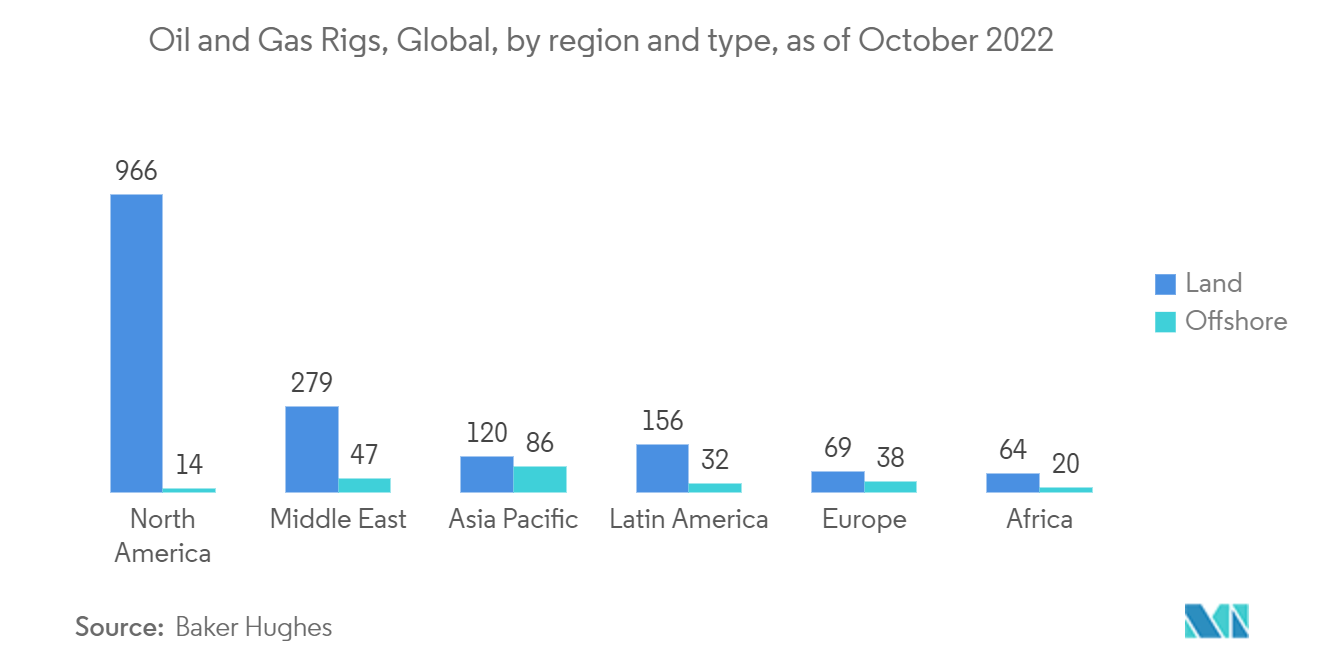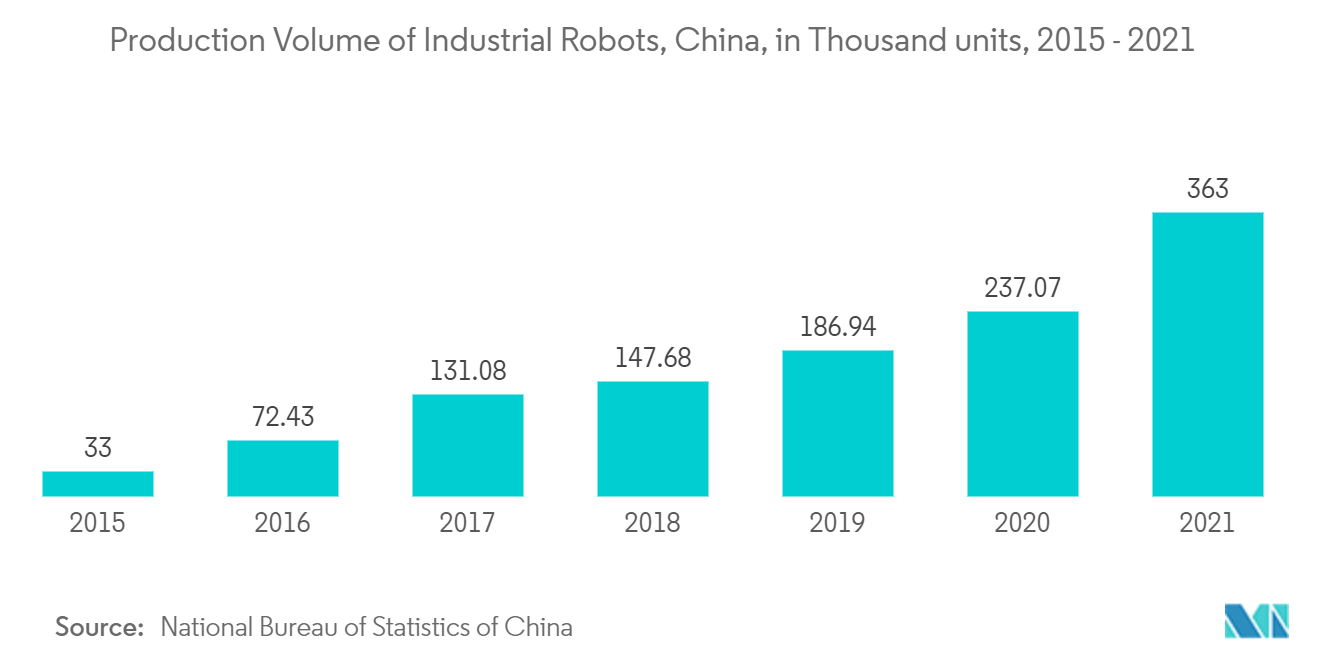Market Trends of Asia-Pacific Smart Manufacturing Industry
This section covers the major market trends shaping the APAC Smart Manufacturing Market according to our research experts:
Oil and Gas is Expected to Hold Significant Share
- The oil and gas end-user industry is one of the earliest pioneers of predictive maintenance due to the need to lower the cost of maintenance while mitigating the risks of environmental disasters due to sensors that can now be easily installed into and onto machinery. These sensors can easily feed the data into specially developed predictive algorithms that warn them about potential failures. Long-term growth in the need for energy means that the oil and gas industry faces many problems along its entire value chain and needs a lot of new technology.
- A lot of data is being generated in the oil and gas sector. A large part of this data consists of exploration, production, and reservoir data logs, such as well logs, seismic surveys, conventional and special core analyses, static and flowing pressure measurements, fluid analyses, pressure-transient tests, and periodic functional production tests, among others. Due to such factors, an enormous opportunity has been created for the vendors to offer a solution for data management and advanced analytical tools.
- Vendors in the region have been offering solutions that allow companies to use AI technologies, such as natural language processing and computer vision, to extract data from these documents automatically. Such demands for real-time analysis and data visualization have driven partnerships with analytics solution providers. The ongoing shift to becoming smart is expected to present even more significant potential, given the strategic push by many companies to expand their downstream operations in the oil and gas value chain, especially petrochemicals.
- Asia Pacific is third in terms of the region with the most oil and gas rigs after North America and the Middle East. For instance, according to Baker Hughes, there are around 86 offshore and 120 onshore oil and gas rigs, making a total of 206 in the cording to Baker Hughes, there are around 86 offshore and 120 onshore oil and gas rigs, making a total of 206 in the Asia-Pacific region as of October 2022.
- Moreover, according to British Petroleum (BP), the oil production in Asia-Pacific amounted to roughly 7.34 million barrels per day in 2021 and is expected to increase more in the near future. The vendor of smart manufacturing can take advantage of this opportunity to increase their revenue.

China is Expected to Hold Major Share
- China is an integral part of Asia's growing shift to intelligent applications. The Chinese government has strengthened the design of smart manufacturing by implementing various schemes and demonstrations in developing standard systems. China aims to create 40 manufacturing innovations by 2025. The focus areas include automated machine tools and robotics, new advanced information technology, aerospace and aeronautical equipment, marine equipment, high-tech shipping, modern rail transport equipment, new-energy vehicles and equipment, power equipment, agricultural equipment, new materials, and biopharma and advanced medical products.
- The Chinese government has built a roadmap to become the leading AI superpower by 2030. Considering AI development and proliferation, the government focuses on integrating AI technology in China's factories to harness and adopt the techniques of integrated intelligent systems, which possess networked vehicles, service robots, drones, video image identification systems, voice interaction systems, smart sensors, neural networks, and chips.
- Many medium and large manufacturers in China are initiating the use of data analytics to optimize factory operations, boost equipment utilization and product quality, and simultaneously reduce energy consumption and production costs. With the latest supply-network management tools, factory operational managers have a clearer view of raw materials and manufactured parts flowing through a manufacturing network that can help them schedule manufacturing operations and product deliveries to reduce costs and improve efficiency. With the active use of data mining technology, engineers and technicians are acquiring new insight into machine failure to enhance reliability.
- Moreover, in November 2022, China's Ministry of Industry and Information Technology announced that it had approved the establishment of three new national manufacturing innovation centers. In addition, they said that these centers would concentrate on key generic technologies and enhance technological research and development in these industries. Furthermore, the ministry said it would guide the new manufacturing innovation centers to strengthen their capabilities to seek technological innovation to deliver strong support for the high-quality development of primary fields in manufacturing.
- According to the National Bureau of Statistics of China, industrial robots' production volume amounted to over 363,000 units in China in 2021, an increase of more than 50% compared to 2020. As China's production capability grows, the demand for industrial robots also increases.

